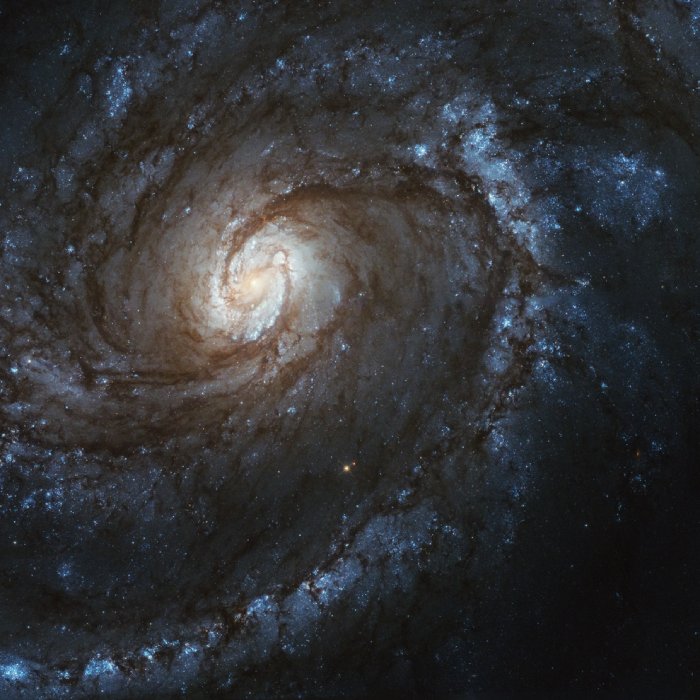M100, also known as NGC 4321, is a grand design spiral galaxy located approximately 55 million light-years away in the constellation Coma Berenices. Discovered by Pierre Méchain in 1781 and catalogued by Charles Messier the same year, it is one of the brightest and most prominent galaxies in the Virgo Cluster, a vast collection of over 2,000 galaxies.
Structure and Composition
M100 is a classic example of a grand design spiral galaxy, characterized by its well-defined spiral arms that are rich in young, hot stars, and regions of star formation. These arms wind out from a small, bright nucleus, which is typical of spiral galaxies.
The galaxy spans about 160,000 light-years in diameter, making it significantly larger than our own Milky Way. It is notable for its vigorous star-forming activity, which is primarily concentrated in its spiral arms. This activity is evidenced by numerous H II regions, which are clouds of ionized hydrogen where new stars are being born. The presence of these regions, along with numerous clusters of young, blue stars, contributes to the overall brightness and vibrant appearance of the galaxy.
One of the most significant features of M100 is its central bar, a structure common in many spiral galaxies, which influences the dynamics and star formation processes within the galaxy. Observations across various wavelengths, from visible light to radio waves, have provided detailed insights into the structure and composition of M100. Notably, it has been the subject of intense study in the context of supernova research, with several supernovae observed within the galaxy over the past few decades.
Other Information
M100’s importance extends beyond its aesthetic and structural characteristics; it plays a crucial role in our understanding of the Virgo Cluster and the large-scale structure of the universe. As one of the primary galaxies within this cluster, it helps astronomers study galaxy interactions and the effects of cluster environments on galaxy evolution. Through detailed observations and research, M100 continues to enhance our comprehension of galactic dynamics, star formation, and the overall workings of spiral galaxies within the cosmic tapestry.
Observation
M100 can be best observed during the spring months in the Northern Hemisphere, particularly from March to May. During this period, the constellation Coma Berenices, where M100 is located, is well-positioned in the night sky. It rises in the late evening and is visible through the night in March, and early night hours in April and May.

With an apparent visual magnitude of 10.1, M100 is too faint to be seen with the naked eye or even with binoculars under typical observing conditions. Under dark skies, M100 can be detected as a faint, fuzzy patch through a small telescope (4-6 inches). The spiral structure of M100 starts to become more discernible in medium sized telescopes (6-10 inches). The spiral arms, central bar, and other structural details, however, are more clearly visible in telescopes with apertures of atleast 10 inches.



